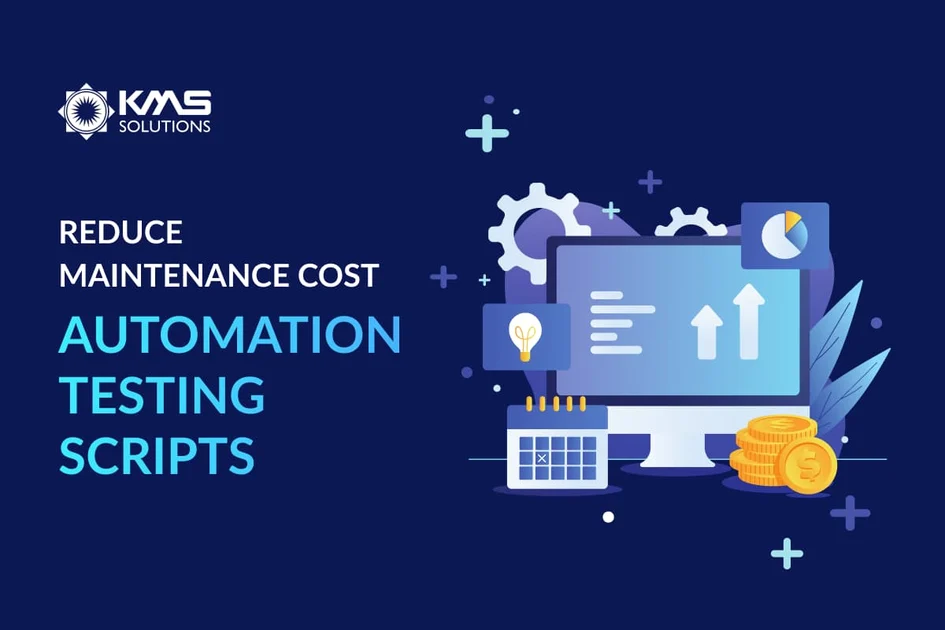As technology and customer demands for enterprise applications evolve rapidly, more and more enterprises are adopting Continuous Delivery (CD) practices to deliver their software applications. The goal of Continuous Delivery is to have a tested code base that can be deployed to the production environment at any time during the software development lifecycle (SDLC). During these stages, releases of new code changes occur frequently, and the code must be previously thoroughly validated.
Creating powerful automated test suites is a common desire for all testing teams, particularly in the BFSI sector, where there is a continuous demand for up-to-date mobile banking applications. Test automation can save time, improve quality, and increase productivity. However, it also requires regular maintenance, which often takes time and resources, to keep up with changing requirements, code updates, and environment changes.
How do banks and financial institutions reduce the cost of test automation maintenance without compromising its benefits? Here are some best practices to follow.
1. Use the Right Tool With a Robust Framework
Test automation tools are increasing in popularity, such as Selenium, Appium, Katalon, and Test Complete. Selecting the right tool is only partially about getting the tests right.
While free/open-source tools have no initial license cost compared to commercial tools, their cost during the maintenance phase is often overlooked. A new wave of automation is low-code or codeless automation tools. These tools involve a record and playback approach, simplifying the creation of test cases and eliminating the need for costly coding expertise.
Product | Test Management | Mobile/Web Testing | CI/CD Support | Pricing Model |
Parasoft | Y | Mobile testing | Y | Pera feature, Free trial |
Katalon | Y | Both | Y | Flat Rate, Free-trial |
Perfecto | N | Web Testing | Y | Per Feature, Free version is available |
Tosca | Y | Both | Y | Flat Rate |
Applitools | Y | Both | Y | Per feature, Free trial |
Table 1: Comparison between popular low-code test automation tools
Besides, instead of wasting resources on tools that are not compatible with your digital banking system, it is essential to have a checklist for choosing automation testing tools. Banks and financial institutions should look for testing tools that your team members are proficient in and can meet your specific testing requirements.
To minimize the expense associated with maintaining automation testing scripts, it’s advisable to avoid using too many tools or customizing them excessively.
2. Implement Version Control And Perform Regular Reviews
Treat test scripts as your production code and include them in your version control system with proper versioning control in place. The best practice here is implementing a change control process for your test scripts, test data, and configuration files. This will help reduce the maintenance cost by enabling banks to revert to previous versions systematically, resolve conflicts, and increase collaboration among software development team members.
Perform code reviews, peer reviews, and test reviews frequently to check the quality and the coverage of your test scripts. These reviews can help you identify and fix the issues before they become costly to maintain.
In the banking sector, where security is paramount, thorough reviews help identify vulnerabilities and potential threats in the codebase before they can be exploited by malicious actors. This proactive approach significantly reduces the risk of security breaches and costly maintenance efforts in the long run.
3. Optimize Test Execution
Focus on automating the right test cases. Test execution can consume significant time and resources, especially when you test a comprehensive banking system that requires a large amount of test cases. Therefore, the best practice to reduce the maintenance cost here is implementing test prioritization, test selection, and test data management techniques to run the most relevant and efficient test.
A random number of 70% or 80% test coverage is not an efficient approach for a banking app.
Moreover, the easiest test to maintain is the one you didn’t write.
For instance, in a mobile banking app, ensuring an intuitive UI is prioritized. However, running UI Automation is particularly hard. It’s slower to write than other tests, slower to run and requires more time for both development and execution compared to other types of tests. If you aim to minimize your maintenance expenses, it’s essential to thoughtfully consider the purpose of your UI tests before writing them.
Focus your automation efforts on high-value features. Talk to your product owners and find out what keeps them awake at night. Writing your tests for the most demanded features will cut your maintenance costs dramatically.
4. Locators, Locators, and Locators
Developing a great locator strategy for your system will greatly reduce your maintenance costs for your automation suite. A well-defined locator strategy ensures that the automation scripts are based on stable and reliable identifiers. For instance, when the UI elements in the banking app change, scripts with solid locators are less likely to break, hence decreasing the need for frequent updates.
The best practice is to be best friends with your software development team. They will be able to work with you on the control IDs or control naming conventions. This is the biggest timesaver in maintenance costs.
Conclusion
Reducing test automation maintenance costs is a vital aspect of efficient software testing practices. By adopting the above strategies, banks and financial institutions can effectively minimize the resources and effort required for ongoing test maintenance.
Through KMS Solutions’ expertise and innovative approaches, we concentrate on best practices to help BFSI businesses not only save costs but also enhance the reliability, security, and overall quality of software apps. Schedule a consultation with our experts to learn more about how we have helped clients in optimizing their testing strategy.








